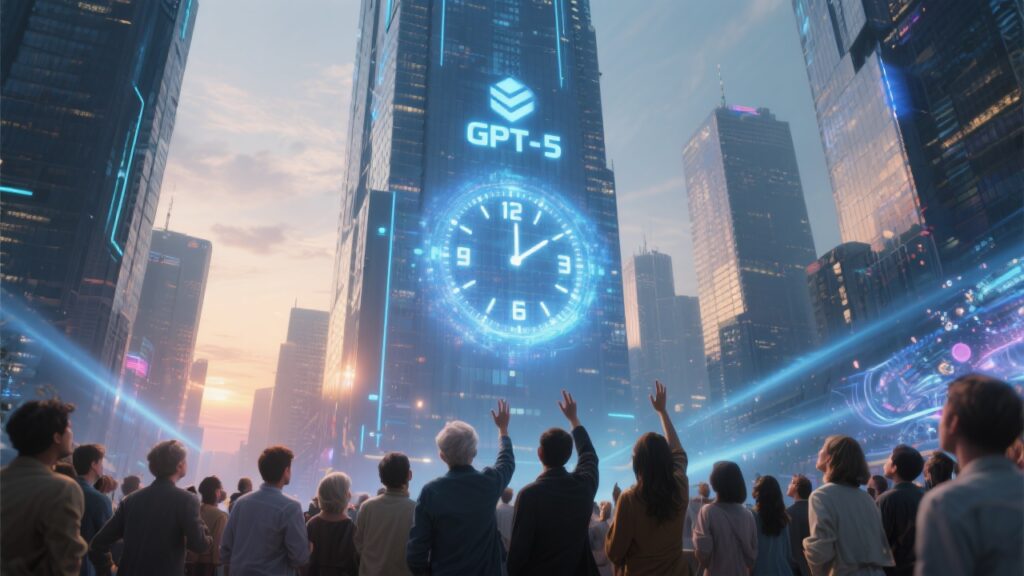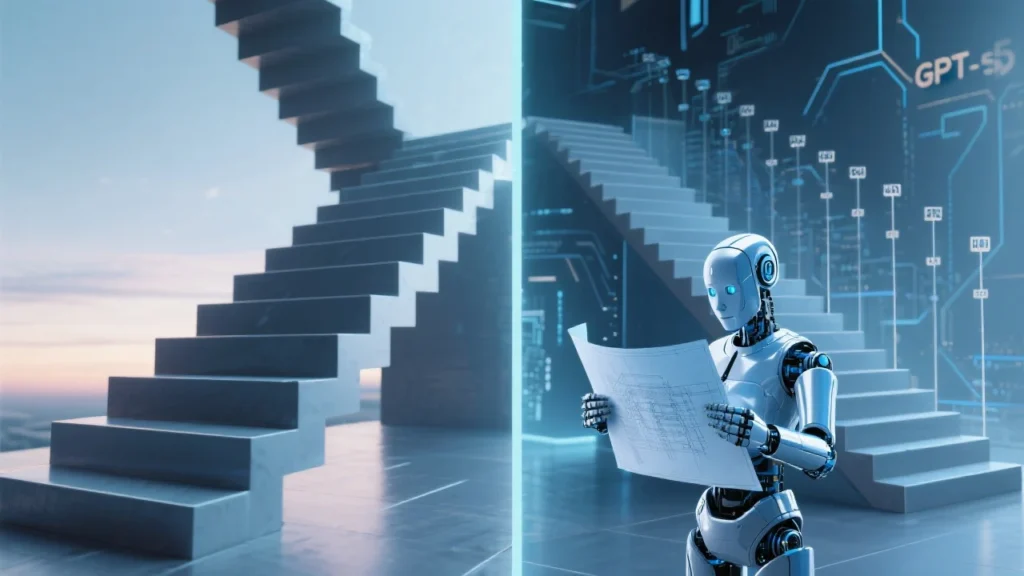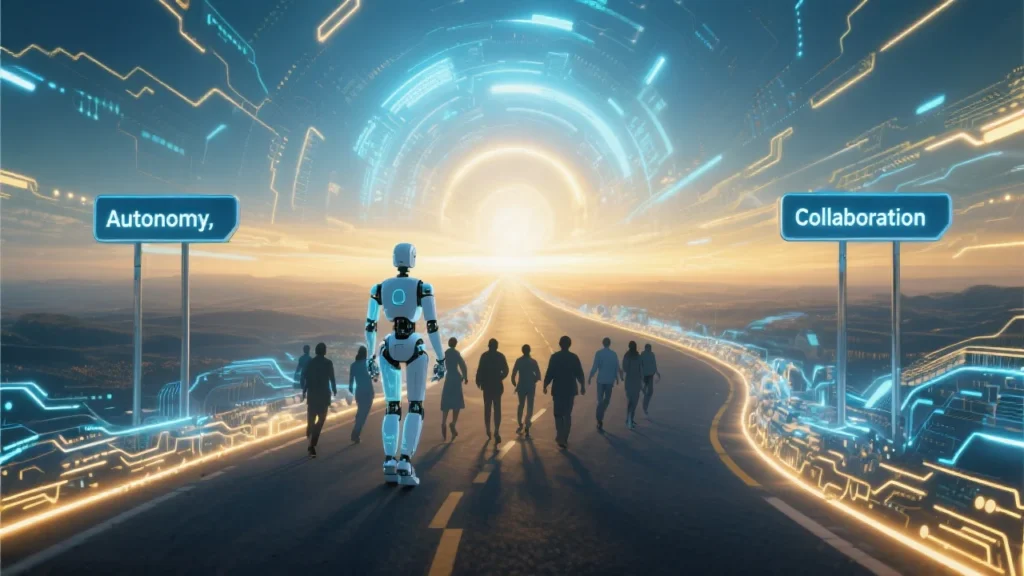The artificial intelligence world is buzzing with anticipation. OpenAI appears ready to unveil GPT-5, potentially within days. This isn’t just another incremental update. It represents a fundamental shift in how AI systems operate.
The Timeline Points to This Week

Sam Altman’s recent social media activity has sent clear signals. His Monday post on X mentioned “something big-but-small today” followed by “a big upgrade later this week.” The first reference pointed to OpenAI’s open-source model release. The second strongly hints at GPT-5.
Boris Power, OpenAI’s head of applied research, added fuel to the fire. His Monday X post read: “Excited to see how the public receives GPT-5!” Other companies are joining the speculation. Flowith already teases GPT-5’s arrival in their model picker interface.
The timing makes sense. OpenAI released GPT-4 in March 2023. Over a year later, users are ready for the next leap forward. Originally planned for earlier this year, GPT-5 faced delays as engineers struggled to integrate complex components.
What Makes GPT-5 Different
GPT-5 isn’t just bigger or faster. It’s smarter about resource allocation. The model combines two distinct AI approaches into one seamless experience.
Traditional GPT models excel at speed and everyday tasks. They’re the sprinters of AI. Meanwhile, OpenAI’s o-series models think deeper but work slower. They’re the marathon runners, perfect for complex reasoning and mathematical problems.
Currently, users must choose between these approaches. Pick wrong, and you waste time or sacrifice quality. GPT-5 eliminates this dilemma entirely.
The system automatically selects the best approach for each task. Simple questions get quick responses from GPT-style processing. Complex problems trigger deeper reasoning capabilities. Users won’t need to understand which model works best. The AI makes that decision.
Nick Turley, head of ChatGPT, explained the goal: “The average person does not need to think about which model to use.” This represents a major user experience improvement.
Subscription Tiers and Access Levels
OpenAI plans three distinct access levels for GPT-5. Free users will get unlimited access to standard intelligence settings. This alone represents a significant upgrade from current free offerings.
Plus subscribers, paying $20 monthly, will access higher intelligence levels. Pro subscribers get the full experience. This includes maximum intelligence settings, larger context windows, and premium features like Voice, Canvas, Search, and Deep Research.
The pricing strategy reflects OpenAI’s need to balance accessibility with revenue. Free users get meaningful improvements. Paid subscribers receive substantially more capability.
Technical Challenges Behind the Scenes
GPT-5’s development wasn’t smooth sailing. Internal documents reveal significant obstacles that delayed the release.
The original “Orion” model was intended as GPT-4’s direct successor. However, it failed to meet expectations. OpenAI released it as GPT-4.5 in early 2025 instead. The model barely made an impact and quickly faded from attention.
According to The Decoder, scaling problems plagued development. Improvements that worked in smaller models failed when applied to larger systems. Additionally, OpenAI faced a shortage of high-quality training data from the internet.
The reasoning models presented their own challenges. While excellent at mathematics and science in isolation, they struggled when adapted for conversational use. The chat versions had to be “dumbed down” because they weren’t trained sufficiently for natural conversation.
One telling example: the o3-pro model took several minutes and $80 in compute costs to respond to “Hi, I’m Sam Altman.” This demonstrates the challenge of balancing reasoning power with practical usability.
Modest Improvements, Not Revolutionary Leaps

Industry experts are tempering expectations. The jump from GPT-4 to GPT-5 won’t match the dramatic improvement seen from GPT-3 to GPT-4.
Internal testing shows progress in programming, mathematics, and complex instruction following. GPT-5 handles customer service workflows better and manages compute resources more efficiently. However, these advances are described as modest rather than groundbreaking.
This plateau was predicted by several AI experts. Bill Gates forecasted this trend in fall 2023. Critics like Gary Marcus and former OpenAI scientist Ilya Sutskever have argued that Transformer-based architectures are reaching their limits.
The challenge isn’t unique to OpenAI. Anthropic’s recent Claude 4 models also delivered only incremental improvements, except for notable coding performance gains.
The Agent Revolution Begins
Despite modest intelligence gains, GPT-5 aims to excel at “agentic” applications. These systems can execute multiple steps autonomously with minimal human oversight.
The model should follow complex instructions more efficiently. It can better determine which tasks require intensive computation versus simple processing. This efficiency could reduce costs while improving performance.
For businesses, this means AI assistants that handle multi-step workflows independently. Customer service, data analysis, and content creation could become increasingly automated.
Reinforcement Learning and Quality Control
OpenAI is heavily investing in reinforcement learning techniques. The company developed a “universal verifier” that automatically rates response quality, even for subjective tasks like creative writing.
This system was used in OpenAI’s International Math Olympiad gold medal-winning model. Researcher Jerry Tworek suggests this reinforcement learning approach could form the foundation for artificial general intelligence.
The universal verifier helps models improve by comparing their responses to human solutions. This creates a feedback loop that enhances performance over time.
Market Competition Intensifies
GPT-5’s release comes amid fierce competition. Anthropic currently leads in coding-related AI applications with their Claude models. OpenAI hopes to regain ground with GPT-5’s improvements.
Google, Anthropic, and Elon Musk’s xAI are all pursuing similar reinforcement learning strategies. The AI arms race is accelerating, with each company trying to maintain competitive advantages.
Meta has been aggressively recruiting OpenAI researchers with substantial compensation packages. Internal tensions at OpenAI have emerged, including reported conflicts between research leadership and deputies.
Financial Pressures and Growth
OpenAI faces enormous operational costs despite rapid growth. The company reportedly plans to spend $45 billion on server infrastructure over the next 3.5 years. Even modest improvements in GPT-5 could help justify these massive investments.
Microsoft, likely to hold approximately 33% equity after upcoming restructuring, remains committed to the partnership. The success of GPT-5 could influence future investment decisions.
What Users Can Expect
GPT-5 will integrate all of ChatGPT’s existing features into one cohesive experience. Voice interactions, Canvas for collaborative work, web search capabilities, and deep research tools will work together seamlessly.
The model promises more user-friendly applications with better compute management. Responses should be higher quality and faster for appropriate tasks. The automatic model selection eliminates the guesswork that currently frustrates many users.
However, Altman warns the model will still be experimental. Users should expect some hiccups as the system learns to balance different capabilities effectively.
The Road Ahead

GPT-5 represents evolution rather than revolution. While not the paradigm shift some hoped for, it addresses real user pain points. The automatic model selection could significantly improve the AI experience for millions of users.
The release sets the stage for more autonomous AI systems. As these agents become more capable, they could transform how businesses operate and how individuals interact with technology.
OpenAI’s success with GPT-5 will influence the entire AI industry. Competitors are watching closely, ready to respond with their own innovations. The next phase of the AI revolution is about to begin.









